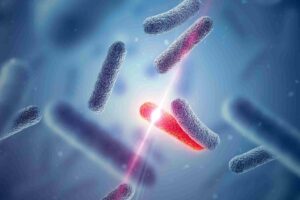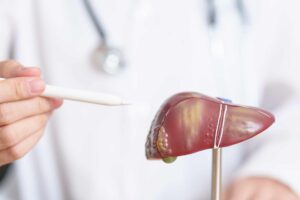What is already known on this topic
Germ-free (GF) animal models have allowed researchers to specifically control animal’s microbiota through the direct inoculation of bacteria of interest, to investigate interplays between enteric human microbes and disease.What this research adds
This study shows that human bacteria have profound impact on the resulting microbial community in the colonized rodent. Moreover, it proposes an accurate method to assess microbial transplant efficiency from the host into the mouse gut.Conclusion
The research confirms that human fecal microbes are able to colonize germ-free mice, however it shows that the engrafted community only partially resembles the human donor bacterial populations.
Murine model systems provide one of the most common ways to study host-microbiota interactions in vivo. Among species, mice can be made germ-free (GF) and it is possible to introduce defined dietary changes or human and other animal microbial species, in order to study the relationship between gut bacterial composition and diseases. Though several studies have successfully transplanted fecal microbiotas from human to rodents, strong selection pressure on microbial species and poor transplant efficacy from the host has been reported.
In this study the team have focused on studying the efficiency of transplantation from human donors’ microbial community to GF mice. Because relative abundance of gut bacterial taxa is influenced by environmental factors, the research has involved four adult female patients with anorexia nervosa (AN) and four age-, race-, and sex-matched healthy controls, with no history of eating disorder or abnormal body mass index. Fecal samples provided by human donors were used for colonization of 153 GF female and male mice using 77 different slurries preparations. Fecal pellets were collected from mice once every 7 days following colonization and mice were followed for 28 days.
In order to track microbial colonization dynamics, the team exploited new bioinformatic tools to identify sequence variants (SV) from 16S rRNA gene sequencing data. By measuring the presence of enteric microbial communities in human fecal samples, slurries and mouse fecal pellets, the researchers assessed transfer efficiency of the original donor microbial community into GF mice over the course of 28 days and found that:
- The transplanted human microbial community determined a significant variation on the resulting community in the colonized rodent and this variation was stable during the study period.
- Successfully, microbial composition was strongly preserved between paired human feces and slurries (88.39% of SVs were shared).
Hence, researchers compared SVs in slurries and mouse fecal pellets in a non-paired analysis, and found that at 1-week post colonization, 95.34% of the SVs were shared between slurries and mouse fecal pellets.
However, when the team analyzed SVs in the slurry and in the corresponding mouse fecal pellet (paired analysis) found that, only 42.15 ± 9.95% SVs were shared between a slurry-mouse fecal pellet pair. Moreover, a significant number of SVs were detected only in the slurry (32.57 ± 11.67%) or only in the mouse fecal pellet (25.28 ± 10.11%) at week 1 post colonization.
In particular, taxa that were more successfully transferred, were those more abundant in slurries. These included Streptococcaceae, Lachnospiraceae, Rumino coccaceae, Veillonellaceae, Erysipelotrichaceae, Peptos treptococcaceae, and Family_XIII. However, Firmicutes and Bacteroidetes phyla, high in slurries, were significantly over- and under-represented respectively. Interestingly, the percentage of SVs shared between slurry-mouse fecal pellet pairs was not sex-dependent.
In summary these data showed that only 42% of SVs transferred from slurries to the corresponding GF mice, and the relative abundances of several human fecal taxa in the slurries were poorly represented in the mouse fecal pellets and vice-versa. The team discussed the possibility that SVs only present in slurries, could be a result of environmental contamination due to non-sterile preparation method. Similar studies have imputed poor microbial transplant efficiency to the different gastrointestinal anatomy and physiology of mice and humans, to experimental diet changes due to the transplantation and to poor immune development in GF mice. All these factors likely contamination, could explain the negative correlations in taxa for many of the paired samples between mice and their respective slurries.
Importantly, this study argues that the unpaired approach to determine transfer efficiency overstates the result and suggest that this method should be avoided in future similar investigations. The researchers propose the paired method could represent and alternative and more accurate way to assess percent of SVs that successfully engraft in the recipient mouse. At last, the researchers identified specific taxa that match their abundances in the donor sample when transplanted into GF mice.
In summary, the research shows how human fecal microbes’ composition is affected when introduced to the mouse gut and identified specific taxa with high transfer efficiencies, that could represent a valuable source for designing further clinical studies.











